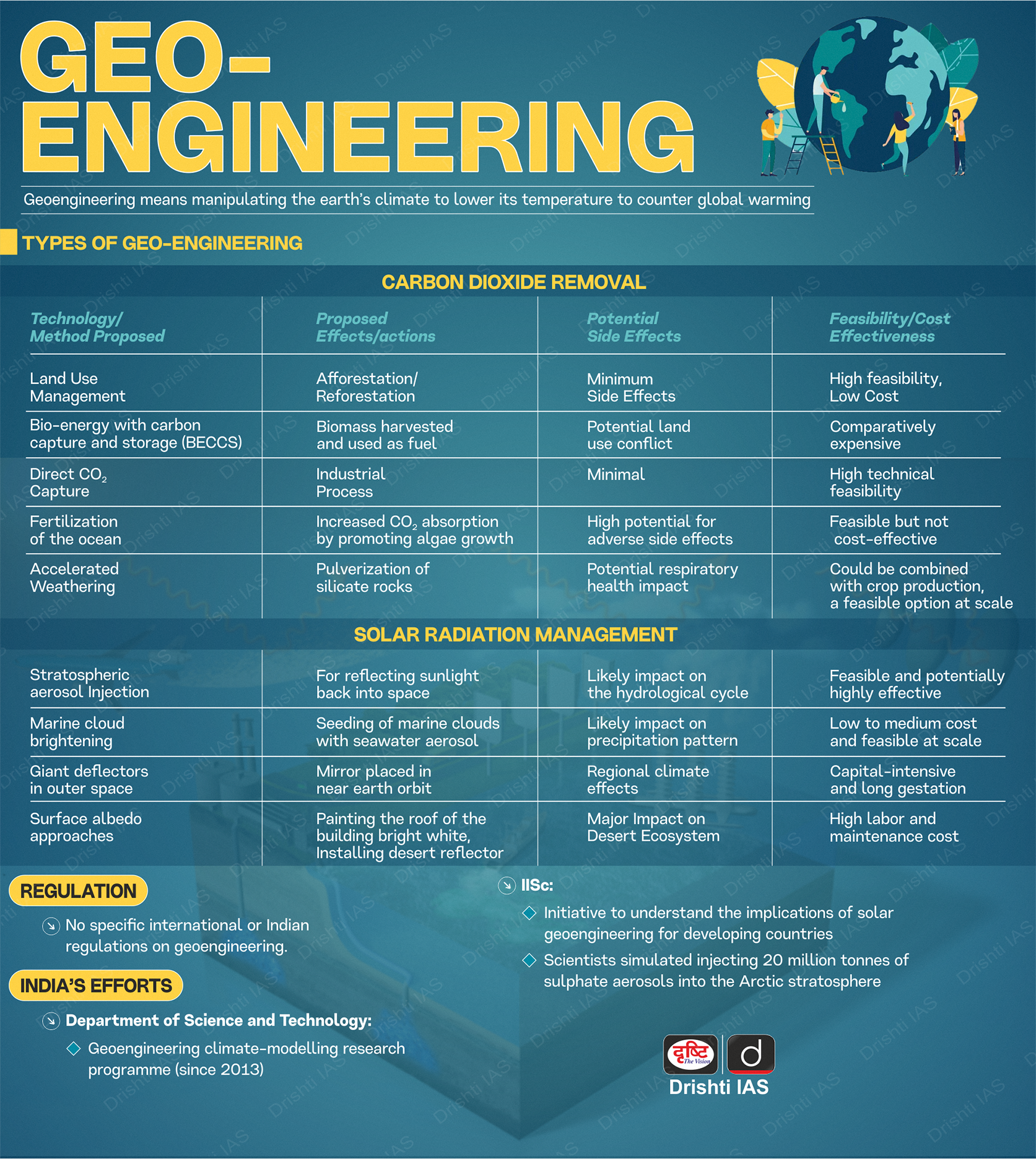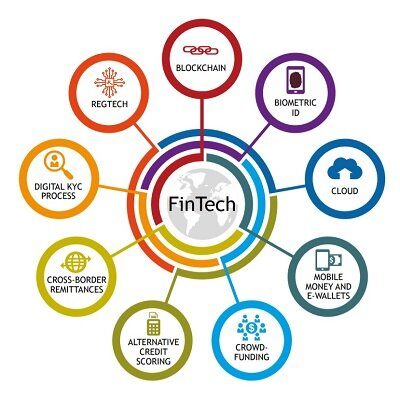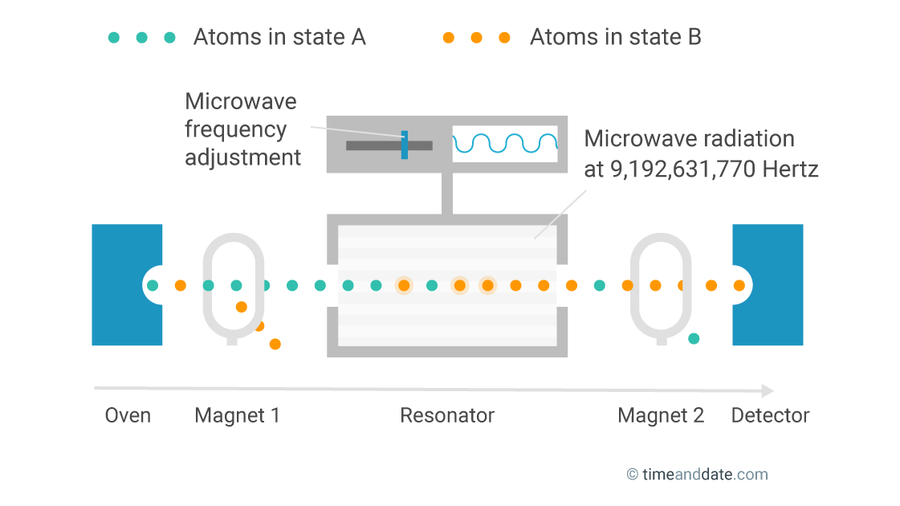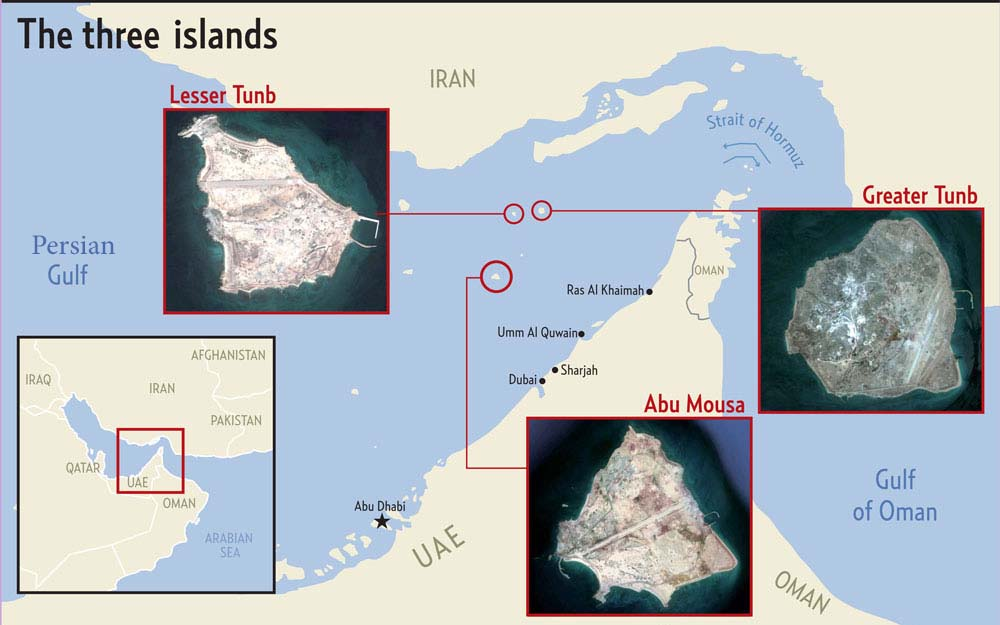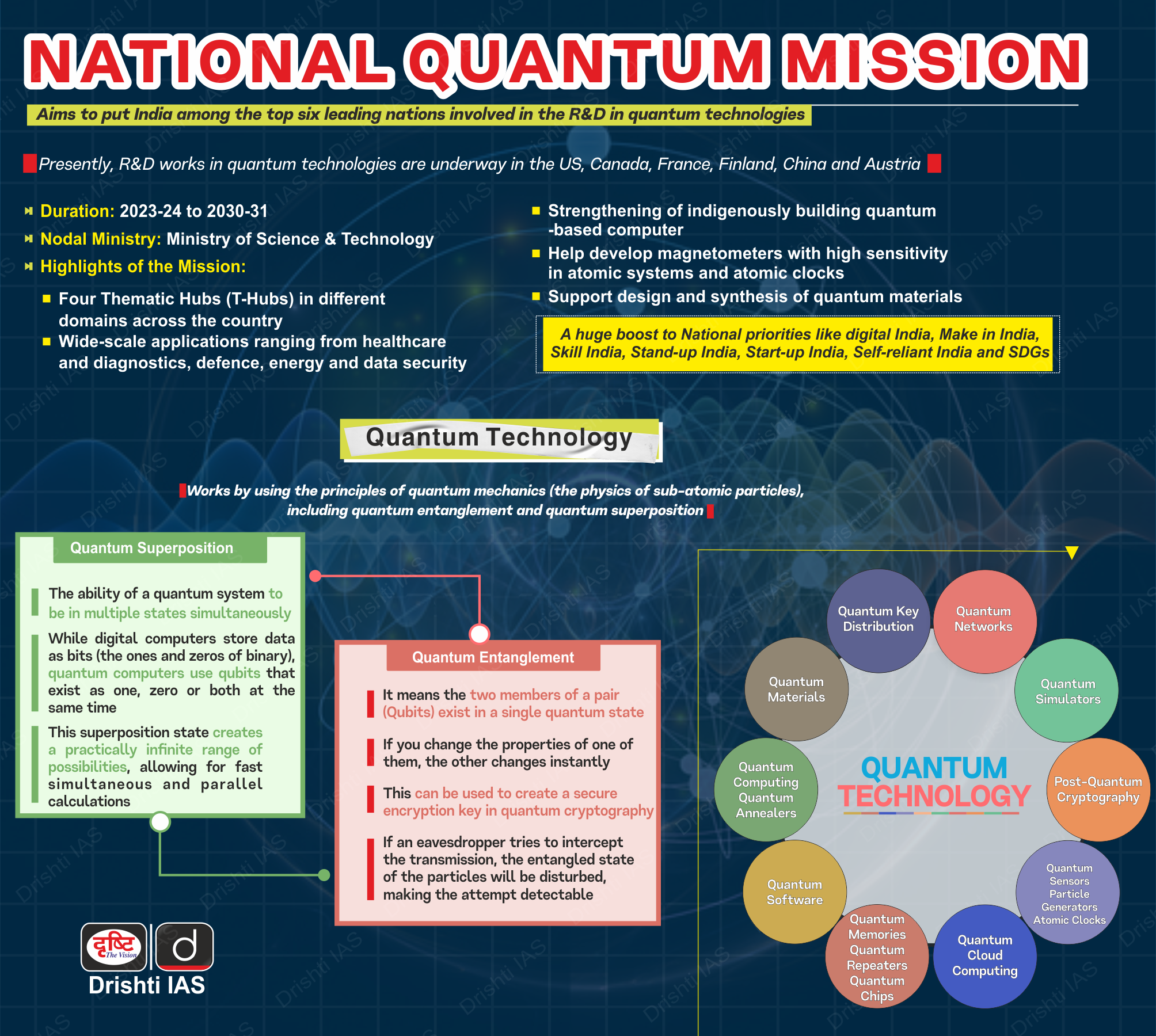Infographics
Biodiversity & Environment
UNESCO’s State of Ocean Report 2024
For Prelims: UNESCO State of Ocean Report 2024, oceanographic research, global warming, acidification, deoxygenation, greenhouse gas emissions, El Nino Southern Oscillation (ENSO), microscopic plankton, Marine heatwaves
For Mains: Key findings of UNESCO’s State of Ocean Report, Impacts of the Global Warming on the Indian Ocean
Why in News?
Recently, the UNESCO State of Ocean Report 2024 highlighted the need for enhanced oceanographic research and data collection to address escalating ocean crises, including warming, acidification, deoxygenation and rising sea levels.
What are the Key Findings of the State of Ocean Report 2024?
- Inadequate Data and Research: The report identifies a critical gap in data and research on accelerating ocean warming.
- There is an urgent need for regular data to monitor ocean warming and its impacts, supporting the challenge for healthy and resilient oceans.
- Ocean Warming: The upper 2,000 meters of oceans warmed at a rate of about 0.32 Watt/m² from 1960 to 2023, which has accelerated to 0.66 Watt/m² in the past two decades.
- This warming trend is expected to continue, causing irreversible changes over the centennial to millennial timescale.
- Earth Energy Imbalance (EEI): Increased greenhouse gas emissions from human activities has resulted in the increased uptake of the EEI by oceans.
- EEI is the balance between incoming energy from the Sun and outgoing energy from the Earth.
- About 90 % of the EEI is being absorbed by oceans, resulting in a cumulative increase in ocean heat content (OHC) in the upper 2,000 m of the water column.
- OHC is the total amount of heat stored by oceans.
- This warming may prevent ocean layer mixing, potentially reducing oxygenated deep waters and leading to deoxygenation.
- Deoxygenation can have long-term negative impacts on the health of coastal and large marine ecosystems and coastal communities.
- Ocean Acidification: There has been a mean global increase in ocean acidification in all ocean basins and seas.
- The open ocean has been experiencing a continuous decline in pH (increase in acidic levels), with an average global surface ocean pH decline of 0.017-0.027 pH units per decade since the late 1980s.
- Coastal waters can turn acidic due to natural processes, such as freshwater influx, biological activity, temperature change and climate patterns like El Nino Southern Oscillation (ENSO).
- Human activities like nutrient input from agricultural and industrial activities also influence the chemistry of coastal areas.
- However, limited long-term observations, particularly in coastal areas, hinder a complete understanding of this phenomenon.
- The open ocean has been experiencing a continuous decline in pH (increase in acidic levels), with an average global surface ocean pH decline of 0.017-0.027 pH units per decade since the late 1980s.
- Continuation of Sea Level Rise: The global mean sea level from 1993 to 2023 increased at a rate of about 3.4 mm/yr.
-
The world will have to improve the space-based and in situ observing systems for monitoring sea level rise at global, regional, and coastal scales.
-
-
Marine Carbon Dioxide Removal (mCDR): The report acknowledges the growing interest in mCDR technologies aimed at capturing and storing atmospheric carbon dioxide.
- Examples like altering the chemical composition of seawater so that oceans absorb more carbon dioxide from the atmosphere or adding nutrients such as iron to encourage the growth of microscopic plankton that can sink to the seafloor and be stored for centuries or longer.
- There has been an increased interest in mCDR technologies with the growing number of start-ups developing mCDR techniques, alongside funding by the United States and the European Union for mCDR research announced in 2023.
- There has been some challenges like the limited use of mCDR and how they will interact with the ocean carbon cycle, possibly causing unintended consequences such as threat to marine life in the long term.
What are the Impacts of the Global Warming on the Indian Ocean?
- Cyclones and Marine Heatwaves: The Indian Ocean is warming faster than other oceans, with the potential for irreversible changes like cyclones and heatwaves.
- The Indian Ocean plays a significant role in the formation of monsoons and pre-monsoon cyclones that bring rain and pose threats to South Asia, East Africa, and West Asia.
- The North Indian Ocean doesn't generate as many cyclones as the Pacific or Atlantic Ocean, but their numbers and rapid intensification have been growing making them the deadliest storms by mortality.
- For example, the 2019 Cyclone Fani in Odisha, India, caused widespread destruction with its high winds and storm surge.
- Marine heatwaves are becoming more frequent and intense, causing coral bleaching and harming marine life.
- For instance, a 2010 marine heatwave in the Indian Ocean caused widespread coral bleaching in the Lakshadweep Islands.
- Altered Ocean Circulation and Marine Life: Warming can weaken upwelling, a process that brings cooler, nutrient-rich waters to the surface. This can harm fish populations that depend on these nutrients.
- For example, a decline in upwelling in the Arabian Sea can negatively impact the sardine fishery.
- As the ocean absorbs more carbon dioxide, it becomes more acidic, harming organisms with calcium carbonate shells and skeletons, such as coral reefs and shellfish.
- The Great Barrier Reef in Australia is already experiencing significant damage due to ocean acidification, and similar threats are faced by coral reefs in the Indian Ocean.
- Warmer water holds less oxygen. Increased stratification due to warming can prevent deep ocean mixing, leading to oxygen depletion in deeper layers. This can create dead zones where marine life cannot survive.
- Human Populations at Risk: Disrupted fisheries, cyclones, and droughts all threaten food security for millions of people who depend on the Indian Ocean for their livelihood.
- Rising sea levels due to global warming threaten coastal communities with inundation and erosion. Low-lying areas in India, such as Mumbai and Kolkata, are particularly vulnerable.
- Tourism and recreation industries that rely on healthy coral reefs and beaches will be negatively impacted by bleaching and coastal degradation.
What are the Steps Taken by India to Mitigate the Effects of Oceanic Heatwaves?
- Monitoring and Research:
Way Forward
- Developing and utilising real-time weather forecasts and cyclone warnings to coastal communities.
- For example, India should aim to enhance the capabilities of the Indian National Centre for Ocean Information Services (INCOIS) for more accurate and timely predictions.
- Several geo-engineering techniques like stratopheric aerosol injection, marine cloud brightening etc can be utilised on a large scale to tackle the issue of oceanic warming.
- Promotion of sustainable coastal development practices building seawalls and leevees that minimise damage to infrastructure and communities during extreme weather events.
- For example, the Odisha government's initiative to plant casuarina trees along the coast proved effective in mitigating the impact of Cyclone Fani.
- Conducting public awareness campaigns and regular evacuation drills to educate coastal communities about cyclone risks and evacuation procedures.
- Establishing marine protected areas to conserve coral reefs and other fragile ecosystems.
- Collaboration of international efforts to address climate change and limit global warming will ultimately benefit the Indian Ocean.
Conclusion
Overall, the UNESCO report highlights critical knowledge gaps and the need for improved data collection to understand and address the multiple threats facing oceans across the globe. It also explores potential solutions like mCDR and coastal habitat restoration, emphasising the need for further research to address associated uncertainties.
|
Drishti Mains Question: Q. Discuss the status of ocean warming due to climate change and its impacts on the Indian Ocean. Also,suggest the measures need to be taken to mitigate the effects of oceanic warming? |
UPSC Civil Services Examination, Previous Year Questions (PYQs)
Prelims
Q.1 Which of the following statements is/are correct about the deposits of ‘methane hydrate’? (2019)
- Global warming might trigger the release of methane gas from these deposits.
- Large deposits of ‘methane hydrate’ are found in Arctic Tundra and under the sea floor.
- Methane in atmosphere oxidizes to carbon dioxide after a decade or two.
Select the correct answer using the code given below.
(a) 1 and 2 only
(b) 2 and 3 only
(c) 1 and 3 only
(d) 1, 2 and 3
Ans: (d)
Mains
Q1. Assess the impact of global warming on the coral life system with examples. (2017)
Q2. ‘Climate change’ is a global problem. How India will be affected by climate change? How Himalayan and coastal states of India will be affected by climate change? (2017)
Q3. Discuss global warming and mention its effects on the global climate. Explain the control measures to bring down the level of greenhouse gases which cause global warming, in the light of the Kyoto Protocol, 1997. (2022)


Indian Polity
Bihar’s Demand for Special Category Status
For Prelims: Special Category Status, Bihar Caste-based Survey, 2022, Planning Commission, Article 370, Centrally Sponsored Scheme.
For Mains: Special Category Status, Challenges of SCS
Why in News?
Recently, the Bihar Chief Minister reiterated the State’s long-standing demand to be granted special category status by the Centre, a move that would increase the amount of tax revenues that the State gets from the Centre.
Why is Bihar Demanding Special Category Status (SCS)?
- Historical and Structural Challenges: Bihar faces significant economic challenges, including a lack of industrial development and limited investment opportunities.
- The bifurcation of the state resulted in the shifting of industries to Jharkhand, exacerbating the employment and economic growth issues in Bihar.
- Natural Calamities: The state grapples with natural calamities like floods in the northern region and severe droughts in the southern part.
- These recurring disasters disrupt agricultural activities, especially in terms of irrigation facilities and the water supply remains inadequate affecting livelihoods and economic stability.
- Lack of Infrastructure: Bihar's inadequate infrastructure hampers its overall development, characterised by poor road networks, limited healthcare access, and challenges in educational facilities.
-
In 2013, the Raghuram Rajan Committee set up by the Centre, placed Bihar in the “least developed category”.
-
-
Poverty and Social Development: Bihar has a high poverty rate, with a significant number of families living below the poverty line.
-
A recent survey by NITI Aayog reveals that Bihar is the state with the highest number of poor with 26.59% multidimensionally poor in 2022-23 which is much higher than the national average of 11.28%.
- Per-capita GDP of Bihar is Rs. 60,000 compared to Rs. 1,69,496 as the National average for 2022-23.
- The state also lags in various human development indicators as well.
-
- Funding for Development: Seeking SCS is also a means to secure substantial financial assistance from the central government to address long-standing socio-economic challenges.
- The Bihar government last year estimated that the granting of the special category status will help the State receive an additional 2.5 lakh crore rupees over five years to spend on the welfare of 94 lakh crore poor families.
What are the Arguments Against Bihar Getting the SCS?
- However, some critics argue that increased funds might incentivise poor policies and penalise well-performing states, as the funds will be diverted to poorer states.
- Historically poor rule of law in Bihar has been a major barrier to growth and investment.
- The Centre already devolves 42% of taxes from earlier 32% to states as per the 14th Finance Commission. Any additional strain on the Centre's funds will potentially impact other national schemes and welfare measures.
- Bihar is one of the fastest-growing states in India. In 2022-23, Bihar’s GDP grew by 10.6%, higher than the national average of 7.2%.
- Per capita income in real terms grew by 9.4% in the previous year.
- More funds might offer short-term relief, but long-term growth depends on improving governance and investment climate.
- Although Bihar meets most of the criteria for the grant of SCS, it does not fulfil the requirement of hilly terrain and geographically difficult areas, which is considered to be the primary reason for difficulty in infrastructural development.
- The Central government citing the 14thFC report, which made a recommendation to the Centre that no State be accorded the SCS, has repeatedly denied the demands.
Other States Demanding SCS
- Since its bifurcation in 2014, Andhra Pradesh has been asking for a grant of SCS on the grounds of revenue loss due to Hyderabad going to Telangana.
- Additionally, Odisha has also been requesting the SCS, highlighting its vulnerability to natural calamities such as cyclones and a large tribal population (nearly 22%).
What is a Special Category Status?
- About:
- SCS is a classification given by the Centre to assist the development of states that face geographical and socio-economic disadvantages.
- The Constitution does not make a provision for SCS and this classification was later done on the recommendations of the 5th Finance Commission in 1969.
- Status was first accorded to Jammu and Kashmir, Assam and Nagaland in 1969. Telangana is the newest State of India to be accorded the status.
- SCS is different from Special status which imparts enhanced legislative and political rights, while SCS deals with only economic and financial aspects.
- For instance, J&K used to have Special status before Article 370 was repealed.
- Parameters (Based on Gadgil Formula):
- Hilly Terrain
- Low Population Density and/or Sizeable Share of Tribal Population
- Strategic Location along Borders with Neighbouring Countries
- Economic and Infrastructure Backwardness
- Nonviable Nature of State Finances
-
Benefits:
- The Centre pays 90% of the funds required in a Centrally-Sponsored Scheme to special category status states as against 60% or 75% in the case of other states, while the remaining funds are provided by the state governments.
- Unspent money in a financial year does not lapse and is carried forward.
- Significant concessions are provided to these states in excise and customs duties, income tax and corporate tax.
- 30% of the Centre’s Gross Budget goes to Special Category states.
-
Challenges:
- Resource Allocation: Granting SCS entails providing additional financial assistance to the state, which can strain the central government's resources.
- Dependency on Central Assistance: States with SCS often become heavily reliant on central assistance discouraging efforts toward self-sufficiency and independent economic growth strategies.
- Implementation Challenges: Even after the grant of SCS, there might be challenges in utilising the funds effectively due to administrative inefficiencies, corruption, or lack of proper planning.
Way Forward
- There is a need to revisit and refine the criteria for granting SCS to ensure fairness and transparency.
- In 2013, the Raghuram Rajan Committee set up by the Centre suggested a new methodology based on a ‘multi-dimensional index’ for devolving funds instead of a SCS, which can be revisited to address the State’s socio-economic backwardness.
- Implement policies that gradually reduce states' dependency on central assistance by promoting self-sufficiency and economic diversification. Encourage states to generate their revenue streams.
- Analysts suggest that Bihar needs a stronger rule of law for sustainable economic growth.
- Other steps need to be taken to encourage states to create comprehensive development plans including:
- Education Revamp: The recommendations of the RTE Forum, a consortium of experts focus on improving early childhood development (ICDS centres), teacher training, and pedagogy shifts towards a more interactive and technology-integrated approach.
- Skilling and Job Creation: Bihar's youth bulge needs skilled opportunities. Focus should be on skilling initiatives aligned with growing industries, alongside fostering entrepreneurship through programs like the SIPB (Single-window Investment Promotion Board) to attract businesses and create a job market.
- Infrastructure Development: Improved infrastructure is crucial for overall growth. The focus should be on better irrigation systems to tackle floods and droughts, alongside developing a robust transport network to connect rural and urban areas, attracting investment and boosting agricultural trade.
- Women's Empowerment and Social Inclusion: Bihar faces challenges with gender equality and social stratification. Initiatives focused on women's education, skill development, and financial inclusion alongside tackling social inequalities through stricter enforcement of laws and promoting social harmony.
|
Drishti Mains Question: Q. Discuss the challenges in granting Special Category Status (SCS) to states in India. How do these challenges impact the fiscal federalism and development objectives of the country? |
UPSC Civil Services Examination, Previous Year Question (PYQ)
Prelims:
Q. The power of the Supreme Court of India to decide disputes between the Centre and the States falls under its (2014)
(a) advisory jurisdiction
(b) appellate jurisdiction
(c) original jurisdiction
(d) writ jurisdiction
Ans: (c)
Mains:
Q. Growing feeling of regionalism is an important factor in the generation of demand for a separate state. Discuss (2013)


Biodiversity & Environment
The Global Nitrous Oxide Budget 2024
For Prelims: Nitrogen pollution, UNEP, Nitrogen-based fertiliser, Ammonia, Air pollution, Methemoglobinemia, Stratospheric ozone layer.
For Mains: Sources of Nitrogen Pollution, Major Impacts of Nitrogen Pollution, Major Compounds of Nitrogen and their Effects.
Why in News?
According to a new study by the Global Carbon Project (GCP) titled, “Global Nitrous Oxide Budget (1980-2020)”, the emissions of nitrous oxide have been rising continuously between 1980 and 2020.
- A study found that in 2021 and 2022, nitrous oxide was released into the air faster than ever before, even though we need to cut greenhouse gasses to fight global warming.
About GCP Study
- Global Carbon Project (GCP) is an organisation established in 2001 which conducts studies that seek to quantify global greenhouse gas emissions and their causes.
- This study by GCP analyses the impact of human activity on greenhouse gas emissions and earth systems and quantifies emissions of carbon dioxide, methane and nitrous oxide (3 major greenhouse gases) to inform public policy and international action.
- It involved the examination of global data for all major economic activities that lead to nitrous oxide emissions from 18 anthropogenic and natural sources and 3 absorbent “sinks” of global nitrous oxide.
Absorbent “Sinks” of Nitrous Oxide:
- Soils:
- Soils act as a significant sink for N₂O. Microbial processes in soils can consume and reduce N₂O emissions.
- Denitrifying bacteria convert N₂O to nitrogen gas (N₂) under anaerobic conditions, effectively removing it from the atmosphere. The balance between nitrification (which produces N₂O) and denitrification determines the net soil sink capacity.
- Oceans:
- Deeper and subsurface oceans absorb N₂O from the atmosphere, through dissolution at the air-sea interface. Marine phytoplankton and other organisms play a role in consuming dissolved N₂O.
- Stratosphere:
- In the stratosphere, N₂O reacts with ozone (O₃), leading to the formation of nitrogen oxides (NOx) and ultimately nitrogen gas (N₂).
- N2O stays in the atmosphere for longer than the average human lifespan (117 years), making it an effective sink for this greenhouse gas, impacting climate and ozone for a longer time.
What are the Key Findings of the Study?
- Alarming Rise in Nitrous Oxide (N2O) Emission: N2O emissions from human activities have increased by 40% (3 million metric tons of N2O per year) between 1980 and 2020.
- Top 5 Emitters of N2O were China (16.7%), India (10.9%), US (5.7%), Brazil (5.3%) and Russia (4.6%).
- Thus, India is the 2nd largest emitter of N2O globally after China.
- In Per-Capita terms, India has the lowest per capita emission of 0.8 kg N2O/person lower than China (1.3), US (1.7), Brazil (2.5) and Russia (3.3).
- The concentration of atmospheric N2O reached 336 parts per billion in 2022, a 25% rise over pre-industrial levels, more than what was estimated by the Intergovernmental Panel on Climate Change (IPCC).
- The study points out that currently, no technologies exist that can remove N2O from the atmosphere.
- Top 5 Emitters of N2O were China (16.7%), India (10.9%), US (5.7%), Brazil (5.3%) and Russia (4.6%).
- Sources of Nitrous Oxide Emissions:
- Natural Source:
- Natural sources such as oceans, inland water bodies and soil contributed 11.8% of the global emissions of N2O between 2010 and 2019.
-
Human-Driven Source (Anthropogenic):
- Agricultural activities were responsible for 74% of human-driven nitrous oxide emissions.
- This was mainly due to the application of chemical fertilisers and the use of animal waste on croplands.
- The growing use of nitrogen fertilisers in the production of food worldwide is increasing concentrations of N2O.
- Other significant sources include industry, combustion, and waste treatment.
- The growing demand for meat and dairy products has also contributed to an increase in emissions through the increase in manure production, which also causes N2O emissions.
- Agricultural activities were responsible for 74% of human-driven nitrous oxide emissions.
- Natural Source:
- Rate/Growth of Emissions:
- Emissions from agriculture continue to grow, while those from other sectors, such as fossil fuels and the chemical industry, are not growing or declining globally.
- Emissions from aquaculture are only a tenth of those from the use of chemical fertilisers on land but are growing rapidly, particularly in China.
- Emission Pattern in Regions: Among the 18 regions considered in this study, only Europe, Russia, Australasia, Japan and Korea had decreasing nitrous oxide emissions.
- Europe had the largest rate of decrease between 1980 and 2020, resulting from reduced fossil fuel and industry emissions.
- China and South Asia had the largest increases in N2O emissions from 1980 to 2020 at 92%.
Key Fact about Nitrous Oxide (N2O)
- Nitrous oxide, commonly known as laughing gas or happy gas, is a colourless, odourless, and non-flammable gas.
- While nitrous oxide is not flammable, it supports combustion to the same extent as oxygen.
- It leads to a state of euphoria, explaining its nickname, ‘laughing gas.’
- It is soluble in water. Its vapours are heavier than air.
- Applications:
- It is commonly used by dentists and medical professionals to sedate patients undergoing minor medical procedures.
- The gas is also used as a propellant in food aerosols.
- It is used in the automotive industry to enhance engine performance.
What are the Implications of Rising Nitrous Oxide Emissions?
- Intensified Global Warming: N₂O is around 300 times more effective than carbon dioxide (CO₂) at trapping heat over 100 years. This magnifies its impact on global warming and its rapid growth adds considerably to atmospheric heat.
-
Threat to Ozone Layer: N₂O breaks down in the stratosphere, releasing nitrogen oxides that damage the ozone layer, which shields us from harmful ultraviolet (UV) radiation.
- This increased UV radiation can lead to a rise in skin cancer, cataracts, and harm to ecosystems reliant on UV protection.
- Challenge to Food Security: Agricultural sector, particularly the use of nitrogen-based fertilisers, is a major contributor to N₂O emissions and the growing demand for food will likely lead to a further increase in N₂O emissions, creating a conflict between food security and climate goals.
-
Challenge to Paris Climate Agreement: The increasing level of N₂O emissions will pose a challenge in achieving the goals of the Paris Climate Agreement (keeping global warming below 2°C compared to pre-industrial times).
What are the Proposed Solutions to Mitigate Nitrous Oxide Emissions?
- Innovative Agricultural Practices:
- Precision Agriculture: Utilising technologies like soil sensors to optimise fertiliser application reduces unnecessary nitrogen input, thereby minimising N₂O formation.
- A study by Journal Nature found that precision agriculture techniques can decrease N₂O emissions by up to 50%.
- Nitrification Inhibitors: These additives slow the conversion of ammonium in fertilisers to nitrate, a readily available form for N₂O-producing microbes.
- Cover Cropping: Planting cover crops during fallow periods helps retain soil moisture and nitrogen, reducing the risk of N₂O release.
- Using Anti-Methanogenic Feed: Using Anti-methanogenic feed like 'Harit Dhara' (HD), or developing similar anti-nitrogen feed for cattle will help to reduce methane and nitrogen emissions.
- Additionally, adopting a cyclic method to generate fuel gas from cattle dung, instead of allowing nitrogen emissions from anaerobic degradation, can also minimise N₂O formation.
- Using Nano-Fertilisers:
- Nano fertilisers can deliver nutrients directly and slowly to plant roots, minimising excess nitrogen and reducing nitrous oxide emissions. They enhance nutrient absorption, potentially requiring less fertiliser overall. By delivering nutrients slowly and directly to plant roots, they can minimise the surplus nitrogen available for conversion
- Precision Agriculture: Utilising technologies like soil sensors to optimise fertiliser application reduces unnecessary nitrogen input, thereby minimising N₂O formation.
- Effective Policy Measures:
- Emission Trading Schemes: Implementing a cap-and-trade system for N₂O emissions can incentivise industries and farmers to adopt cleaner practices.
- The successful implementation of such schemes in the European Union for other greenhouse gasses offers valuable lessons.
- Targeted Subsidies: Governments can provide financial support for farmers transitioning to sustainable practices that minimize N₂O emissions.
- China's successful reduction in N₂O emissions since the mid-2010s has been partly attributed to targeted subsidies for improved fertiliser management.
- Research and Development: Increased funding for research on N₂O mitigation strategies, including improved fertilisers and waste management techniques, is crucial for long-term progress.
- Emission Trading Schemes: Implementing a cap-and-trade system for N₂O emissions can incentivise industries and farmers to adopt cleaner practices.
- Addressing Emissions from Other Sources:
- Industrial Processes: Implementing stricter regulations and promoting cleaner technologies can minimise N₂O emissions from industrial sources such as nylon production and nitric acid manufacturing can curb rising nitrous oxide emissions.
- Combustion: As per the IPCC Climate Change 2021 report, optimizing combustion processes in vehicles and power plants can help reduce N₂O emissions as a by-product.
- Waste Management: As per the World Bank report, technological advancements in waste-to-energy conversion and the effective treatment of wastewater and agricultural waste can significantly decrease N₂O emissions from these sources.
|
Drishti Mains Question: What are the reasons for the rise in global nitrous oxide emissions? Discuss the environmental and policy implications of this trend, and suggest measures to mitigate nitrous oxide emissions. |
UPSC Civil Services Examination, Previous Year Question:
Q. Which of the following add/adds nitrogen to the soil? (2013)
- Excretion of urea by animals
- Burning of coal by man
- Death of vegetation
Select the correct answer using the codes given below:
(a) 1 only
(b) 2 and 3 only
(c) 1 and 3 only
(d) 1, 2 and 3
Ans: (c)
Q. Which one of the following sets of elements was primarily responsible for the origin of life on the Earth? (2012)
(a) Hydrogen, Oxygen, Sodium
(b) Carbon, Hydrogen, Nitrogen
(c) Oxygen, Calcium, Phosphorus
(d) Carbon, Hydrogen, Potassium
Ans: (b)
Q. Which feature of some species of blue-green algae helps promote them as bio-fertilizers? (2010)
(a) They convert atmospheric methane into ammonia which the crop plants can absorb readily
(b) They induce the crop plants to produce the enzymes which help convert atmospheric nitrogen to nitrates
(c) They have the mechanism to convert atmospheric nitrogen into a form that the crop plants can absorb readily
(d) They induce the roots of the crop plants to absorb the soil nitrates in larger quantities
Ans: (c)
Mains:
Q. Sikkim is the first ‘Organic State’ in India. What are the ecological and economical benefits of Organic State? (2018)


Indian Economy
Fintechs Leading India’s Start-up Ecosystem
For Prelims: Fintech industry, Internet, Crypto-currencies, Micro, Small and Medium Enterprises (MSME), Jan Dhan Yojna, Direct Benefits Transfer, IndiaStack, Unified Payments Interface, Central Bank Digital Currency (CBDC), Reserve Bank of India, Digital Rupee, Digital lending.
For Mains: Significance of Fintech in Indian Context, Growth of FinTech Being Driven by Government Initiatives, Issues Associated with the Fintech Industry.
Why in News?
Fintech Companies continue to be an attractive option for entrepreneurs in the Start-Up ecosystem.
- As per the data from Tracxn (a company that provides market intelligence data for private companies), fintechs have received over 15% of the total equity funding into start-ups in FY24 so far.
What are Fintechs?
- About:
- Fintech, a combination of the terms “financial” and “technology,” refers to businesses that use technology to enhance or automate financial services and processes.
- Types:
- Digital Payments: These offer digital payment solutions, such as mobile wallets, online payment gateways, and peer-to-peer (P2P) payments. Ex-Phonepe, Paytm etc.
- Alternative Lending: They are also known as marketplace lending or Peer-2-Peer (P2P lending), occurring on online platforms that connect borrowers overlooked by traditional lenders with investors looking for high-yield investments. Ex: Lending Club, Prosper, PayPal Working Capital, GoFundMe etc.
- Insurance: These offer digital insurance solutions, such as health insurance, life insurance, and car insurance. Ex-Digit Insurance, Policybazaar etc.
- InvestmentTech: These offer digital investment solutions, such as stock trading, mutual funds, and cryptocurrency trading. Ex-Zerodha, Groww etc.
- Others types include Crop loan risk management (Eg: Satsure), online fraud detection (e.g. Tutelar), debt management (Debt Nirvana) and Banking-as-a-Service Platform (e.g., FidPay)
What is the State of Fintech Industry in India?
- FinTech Ecosystem: India remains a global leader in fintech, 3rd highest globally after the US and UK, having a combined valuation of over USD 155 billion.
- Nearly a third of the soonicorn universe (soon to be unicorns) comprises fintechs.
- As per Startup India, an initiative by the Ministry of Commerce and Industry, the market size of India’s fintech industry is expected to reach USD 150 billion by 2025.
- High Adoption Rate: As per the Economic Survey 2022-23, fintech companies in India witnessed an 87% adoption rate across varied user bases as opposed to the global average rate of 64%.
- Driving Digital Payments: Fintech companies in India account for 70% of digital payment transactions, marking a two fold rise in their share during FY22 compared to FY19.
- Financial Inclusion: More than 10 million people and small businesses gained access to savings accounts, insurance, investment options, and credit facilities through mobile-based services and digital platforms.
- Democratising Lending Process: Peer-to-peer lending platforms are democratising lending, providing individuals and small businesses with access to funds without the need for traditional financial institutions.
- Rise in Public Investment: Investment platforms and robo-advisors are making investments in stocks, mutual funds, and other financial instruments more accessible.
What are the Government Initiatives Driving the Growth of FinTech?
- Digital Identity Infrastructure (JAM Trinity):
- Jan Dhan Yojana (PMJDY): This world's largest financial inclusion program has provided bank accounts to over 450 million people creating a massive base for FinTech companies to offer new financial products and services like remittances, credit, insurance, and pensions directly through these accounts.
- Aadhaar: According to a World Bank study, Aadhaar has facilitated bank account opening for over 570 million previously unbanked adults in India.
- Aadhaar Enabled Payment System (AePS) has allowed Aadhaar card holders to conduct financial transactions using their Aadhaar number and biometric authentication (fingerprint or iris scan).
- Unified Payments Interface: UPI transaction volume has surged by 49% year-on-year.
- More banks are embracing UPI, with the number of integrated banks increasing from 414 in April 2023 to 581 in April 2024. This wider availability is fueling the overall growth in UPI transactions.
- Regulatory Support and Innovation:
- In 2017, the RBI granted recognition to Peer-to-Peer (P2P) lending platforms as Non-Banking Financial Companies (NBFCs) providing legitimacy and facilitated growth within the P2P lending segment, expanding credit access for individuals and small businesses.
- Regulatory Sandbox (RS) and Fintech Repository:
- RS is an infrastructure that helps Fintech players to live test their products or solutions, before getting the necessary regulatory approvals for a mass launch, saving start-ups time and cost. The RBI established a Regulatory Sandbox in 2017.
- Additionally, the Fintech Repository launched in 2021 serves as a centralised information hub for fintech companies, promoting transparency and streamlining regulatory compliance.
- Self-Regulatory Organisations (SRO) Framework:
- To promote responsible growth, and recognizing the need for industry-led self-regulation, the RBI introduced a framework for Self-Regulatory Organizations (SROs) in the FinTech sector in 2023.
- These SROs act like guardians within the industry, establishing and enforcing a code of conduct, grievance redressal mechanisms, and consumer protection standards.
What are Potential Growth Areas for the Fintech Sector in India?
- SME Lending: Small and medium enterprises (SMEs) often face challenges accessing traditional credit channels.
- Supply Chain Financing: Traditional supply chain financing methods are often cumbersome and lack transparency.
- Blockchain-based fintech solutions can streamline payments, improve traceability, and enhance working capital management for businesses within the supply chain.
- Agritech: Solutions for crop loan risk management, micro-insurance for farmers, and digital marketplaces for agricultural products can provide much-needed support and empower rural communities.
- Regulatory Landscape and Long-Term Stability: The RBI's framework for managing "user harm" within the fintech sector, while potentially creating a cautious investment climate in the short term, is a positive development in the long run.
- Clear and well-defined regulations will enhance consumer protection and build trust in the ecosystem, attracting long-term investors and fostering sustainable growth.
Steering Committee Recommendations Related to Fintech
- About:
- The Steering Committee, chaired by Subhash Chandra Garg, on Fintech Related Issues submitted its report to the Finance Minister in 2019.
- The Committee was constituted with the objective of making Fintech related regulations more flexible and enhancing entrepreneurship.
- Key Observations regarding Fintechs:
- Banking entities have an advantage in accessing crucial payment infrastructure like Aadhaar-enabled payment systems. This hinders a level playing field for non-banking Fintech companies.
- The lack of a regulatory sandbox, a controlled environment for testing innovative products, stifles experimentation and slows growth.
- The rise of Fintech introduces new data privacy and security risks. Existing regulations and the Data Protection Act might need adjustments to foster a secure and growth-oriented environment.
- Recommendations:
- Expanding Fintech Services: Encourage the use of Fintech for bolstering cybersecurity, fraud control, and money laundering prevention. Explore virtual banking and dematerialisation of financial instruments (converting physical certificates to electronic form).
- Policy Actions for Promotion:
- Government and public sector institutions should leverage AI for back-end automation.
- Collaborate with MSMEs to implement blockchain solutions in trade finance.
- Financial Inclusion:
- Develop a credit registry for farmers using AI/ML based credit scoring to enable easier loan access.
- Utilise Fintech for managing claims and premium payments in agricultural crop insurance schemes.
- Create a common digital platform for small savings products, micro-pension schemes, and government pensions, facilitating digital subscriptions.
- Collaboration and Coordination:
- Form an advisory council on Fintech with industry experts for each financial sector regulator.
- Establish an inter-regulatory technical group for better coordination between regulatory bodies.
- Set up an inter-ministerial group to explore potential applications of Fintech-enabling technologies.
- Collaborate with other countries to share knowledge on Fintech risks and benefits.
- Data Protection: Establish a task force within the Ministry of Finance to address data protection challenges specific to the financial sector.
|
Drishti Mains Question: Discuss the growing prominence of fintechs in the Indian startup ecosystem, highlighting the key drivers and the regulatory challenges faced by the sector. |
UPSC Civil Services Examination Previous Year Question (PYQ)
Prelims
Q. With reference to “Blockchain Technology”, consider the following statements: (2020)
- It is a public ledger that everyone can inspect, but which no single user controls.
- The structure and design of the blockchain is such that all the data in it are about cryptocurrency only.
- Applications that depend on basic features of blockchain can be developed without anybody’s permission.
Which of the statements given above is/are correct?
(a) 1 only
(b) 1 and 2 only
(c) 2 only
(d) 1 and 3 only
Ans: (d)
Q. With reference to India, consider the following: (2010)
- Nationalisation of Banks
- Formation of Regional Rural Banks
- Adoption of village by Bank Branches
Which of the above can be considered as steps taken to achieve the “financial inclusion” in India?
(a) 1 and 2 only
(b) 2 and 3 only
(c) 3 only
(d) 1, 2 and 3
Ans: (d)


Important Facts For Prelims
Atomic Clock
Why in News?
In a recent study published in the scientific journal Nature, a new type of portable Optical atomic clock was introduced for use on ships.
- This new iodine clock is not as precise as an optical atomic clock used in a laboratory but it is more portable and durable. It gains or loses a second every 9.1 million years.
What are Atomic Clocks?
- About:
- It is an advanced timekeeping device that utilises the natural vibrations of atoms to measure time with exceptional accuracy.
- It was developed by Louise Essen in 1955. Presently, India has operational atomic clocks located in Ahmedabad and Faridabad.
- Key Features:
- Atomic clocks are far more precise than conventional clocks because atomic oscillations have a much higher frequency and are much more stable.
- Atomic clocks are very accurate, with traditional atomic clocks losing or gaining one second over 300 million years, while optical atomic clocks can maintain this precision for 300 billion years.
- A caesium atomic clock loses or gains a second every 1.4 million years.
- Working:
- Caesium (Cs) atomic clocks operate by causing Cs atoms to transition to a higher energy level, which is linked to the frequency of microwave radiation and the measurement of time in seconds.
- In this process, Cs atoms are placed in a cavity, and microwave radiation with a specific frequency is directed towards them. When the frequency of the radiation matches the energy transition of the Cs atoms, it creates a resonance phenomenon. The Cs atoms absorb this radiation and move to a higher energy state. This transition occurs precisely when the frequency of the radiation is 9,192,631,770 Hz.
- This means that when a Cs-133 atom undergoes 9,192,631,770 oscillations between its energy levels, one second has elapsed.
- The precision of atomic clocks is achieved through a system that detects any deviations in the resonance frequency and makes adjustments to the microwave radiation to maintain resonance.
- Optical Atomic Clock:
- They are even more accurate than Atomic Clocks.
- These clocks use lasers to stimulate atomic transitions, producing highly coherent light where all emitted light waves have the same frequency and stable wavelengths.
- It is different from Atomic Clock due to:
- Higher Operating Frequency: Optical atomic clocks operate at higher frequencies, allowing them to complete more oscillations in a given time frame compared to traditional atomic clocks.
- This enables them to measure smaller increments of time more accurately due to the increased number of cycles counted within that time period.
- Narrower linewidth: These have much narrower linewidths (range of frequencies) over which the atomic transition occurs. A narrower linewidth makes it easier to precisely tune the frequency of the optical light that triggers the resonance, leading to higher accuracy and more precise time measurements.
- Higher Operating Frequency: Optical atomic clocks operate at higher frequencies, allowing them to complete more oscillations in a given time frame compared to traditional atomic clocks.
- The element strontium (Sr) is commonly used in optical atomic clocks due to its narrow linewidths and stable optical transitions.
What are the Applications of Optical Atomic Clocks?
- Self-Reliance and National Security: India's reliance on foreign atomic clocks, especially those from the US, poses a risk to critical infrastructure like NavIC (Indian GPS) in times of conflict.
- Creating domestic atomic clocks will provide independent timekeeping, enhancing national security.
- Enhanced Accuracy and Reliability: Atomic clocks offer unmatched precision compared to conventional methods. By deploying them across the nation, India can synchronise all digital devices with Indian Standard Time (IST), ensuring a unified and highly accurate time reference.
- Time synchronisation through optical atomic clocks will benefit various sectors:
- Telecommunications: Precise timing minimises errors and facilitates seamless data transfer in communication networks.
- Financial Systems: Accurate timestamps for financial transactions safeguard against fraud, especially in high-frequency trading.
- Cybersecurity: Atomic clocks play a crucial role in India's digital economy by ensuring the accuracy of timestamps for transactions, which helps prevent fraud, maintain data integrity, and enhance cybersecurity measures.
- Critical Infrastructure and Power Grids: Atomic clocks play a vital role in synchronising critical infrastructure, including power grids, transportation systems, and emergency services.
UPSC Civil Services Examination, Previous Year Question (PYQ)
Prelims:
Q.1 Which one of the following countries has its own Satellite Navigation System? (2023)
a. Australia
b. Canada
c. Israel
d. Japan
Ans: d


Important Facts For Prelims
New Non-Permanent Members of UNSC
Why in News?
Recently, Pakistan, Somalia, Denmark, Greece, and Panama have been chosen as non-permanent members of the UN Security Council (UNSC), serving a 2-year term from 1st January 2025 to 31st December 2026.
How are the New Members Elected to the UNSC?
- Election Process and Regional Groupings:
-
The election process for non-permanent seats on the UNSC involves regional groups nominating candidates. There are four regional groups.
-
The newly elected members are Somalia for the African Group, Pakistan for the Asia-Pacific Group, Panama for the Latin America and Caribbean Group, and Denmark and Greece for the Western European and Others Group.
-
Each regional group typically agrees on candidates to present to the General Assembly for a two-year term.
- This process aims to ensure regional representation within the Security Council, reflecting global geopolitical diversity and interests.
-
- Current and Incoming Members: The new members will replace outgoing countries such as Mozambique, Japan, Ecuador, Malta, and Switzerland.
- Role and Challenges of the Security Council: The UN Security Council plays a critical role in maintaining international peace and security.
- However, its effectiveness can be hindered by the veto power of its permanent members.
What is the United Nations Security Council?
- The United Nations Security Council, established under the UN Charter in 1945, constitutes one of the UN's six principal organs.
- It comprises 15 members (5 permanent (P5) and 10 non-permanent members).
- Out of the 10 non-permanent members, five are elected each year by the General Assembly for a two-year term.
- The permanent members are the United States, the Russian Federation, France, China, and the United Kingdom.
- According to Oppenheim's International Law: United Nations, "Permanent membership in the Security Council was granted to five states based on their importance in the aftermath of World War II."
- India's participation in the Security Council has been as a non-permanent member during the periods of 1950-51, 1967-68, 1972-73, 1977-78, 1984-85, 1991-92, 2011-12, and 2021-22.
UPSC Civil Services Examination, Previous Year Question (PYQ)
Prelims:
Q. The Security Council of UN consists of 5 permanent members, and the remaining 10 members are elected by the General Assembly for a term of (2009)
(a) 1 year
(b) 2 years
(c) 3 years
(d) 5 years
Ans: (b)
Mains
Q. Discuss the impediments India is facing in its pursuit of a permanent seat in the UN Security Council (2015)


Rapid Fire
Greater Spotted Eagles
A recent report revealed that the ongoing war between Russia and Ukraine has forced greater spotted eagles, a large raptor species, to change their migratory paths.
- IUCN Status: Vulnerable
- Geographical Distribution: Mostly vanished from western and central Europe, with a limited breeding population in Polesia, Belarus.
- India’s Wildlife Protection Act, 1972: Schedule I (Other eagle species)


Rapid Fire
PM Kisan Nidhi
Recently, the Union Government released the seventeenth instalment of the PM Kisan Nidhi in the first decision of the newly sworn-in government.
- Under the PM Kisan Nidhi scheme, the centre transfers an amount of Rs 6,000 per year, in three equal instalments, directly into the bank accounts of all landholding farmers irrespective of the size of their land holdings.
- Launched in February 2019, it is a Central Sector Scheme with 100% funding from the Government of India.
- It is being implemented by the Ministry of Agriculture and Farmers Welfare, however the entire responsibility of identification of beneficiary farmer families rests with the State / UT Governments.
Read more: PM-Kisan Scheme


Rapid Fire
Volkhov River
Recently, four medical students from Maharashtra studying at a university in Russia drowned in the river Volkhov near St. Petersburg.
- The Volkhov River is in northwestern Russia.
- It flows from Lake Ilmen, passes through Novgorod, and goes north-northeast into Lake Ladoga through a flat, swampy area.
- In the town of Volkhov, the first hydroelectric station in the Soviet Union was built in 1926.
- The Volkhov, in early times part of the important Baltic Sea–Black Sea trade route, is navigable only by small craft.
- As per the data released by the Ministry of External Affairs (MEA) in 2022, there were nearly 16, 500 Indian students in Russia.
Read more: India-Russia


Rapid Fire
The Greater Tunb, The Lesser Tunb, and Abu Musa Island
Recently, Iran called in China's ambassador to lodge a protest over a joint statement made by China and the United Arab Emirates (UAE) regarding the sovereignty of the Abu Musa, Greater Tunb, and Lesser Tunb islands.
- These are small disputed islands between Iran and UAE, located at the entrance of the Strait of Hormuz in the Persian Gulf.
- Iran claims that the islands were historically part of Persian territories until they were occupied by the British in the early 20th century.
- After British forces withdrew in 1971, Iran took control of the three islands, considering them an integral part of its territory.
- According to the UAE, the islands belonged to the emirate of Ras al-Khaimah until Iran allegedly seized them by force just days before the formation of the Emirati Federation in 1971 before UAE’s independence from Britain.


Rapid Fire
International Year of Quantum Science and Technology
The United Nations (UN) has designated the year 2025 as the ‘International Year of Quantum Science and Technology’ to increase public awareness of the importance of quantum science and its applications.
- The resolution for this was led by Mexico at the UNESCO General Conference in May 2023, which was adopted by almost 60 countries.
- Also, the year 2025 marks a century since German physicist Werner Heisenberg published a paper laying the foundation of modern quantum mechanics.
- He was awarded the Nobel Prize for physics in 1932 for the creation of quantum mechanics.
- India launched the National Quantum Mission in April 2023, to be implemented from 2023 to 2031 by the Department of Science & Technology (DST).
- It has four verticals: Quantum Computing, Quantum Communication, Quantum Sensing and Metrology, and Quantum Materials and Devices.
Read more: Quantum Technology, National Quantum Mission




